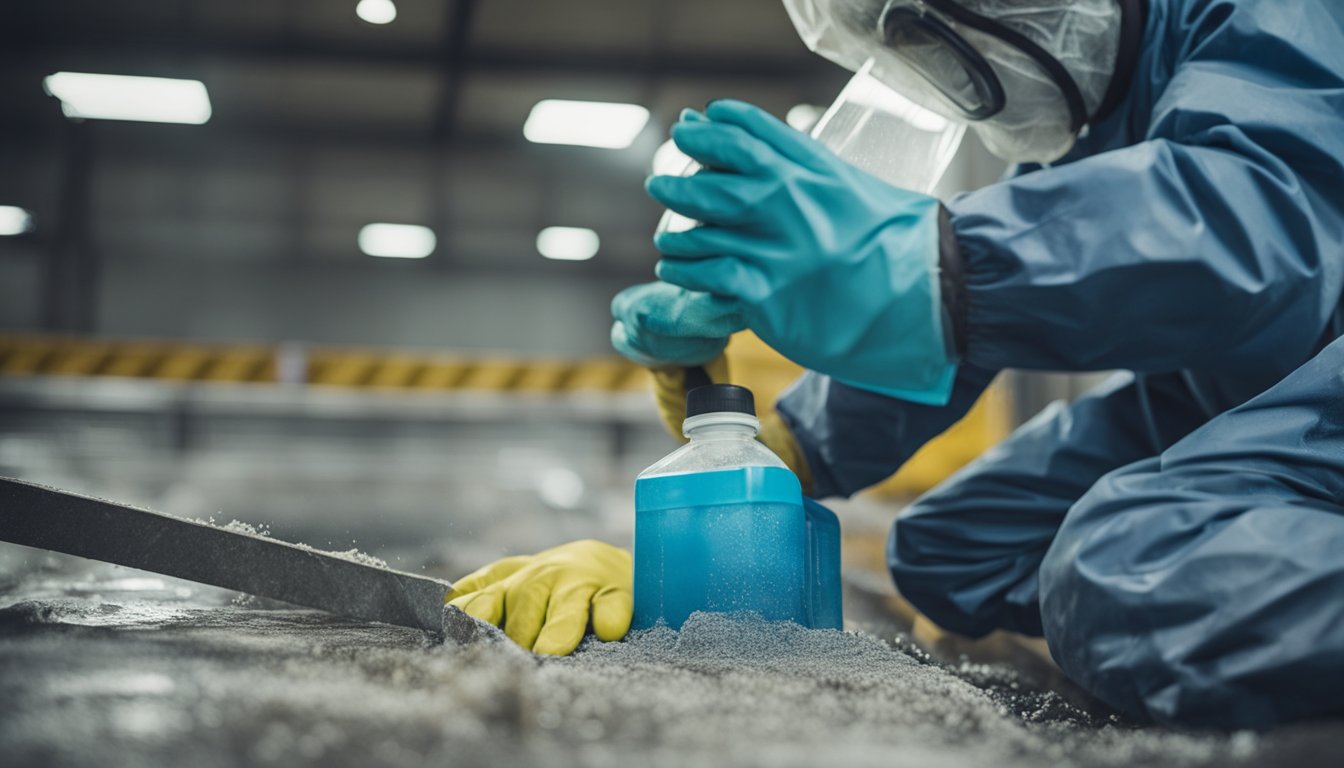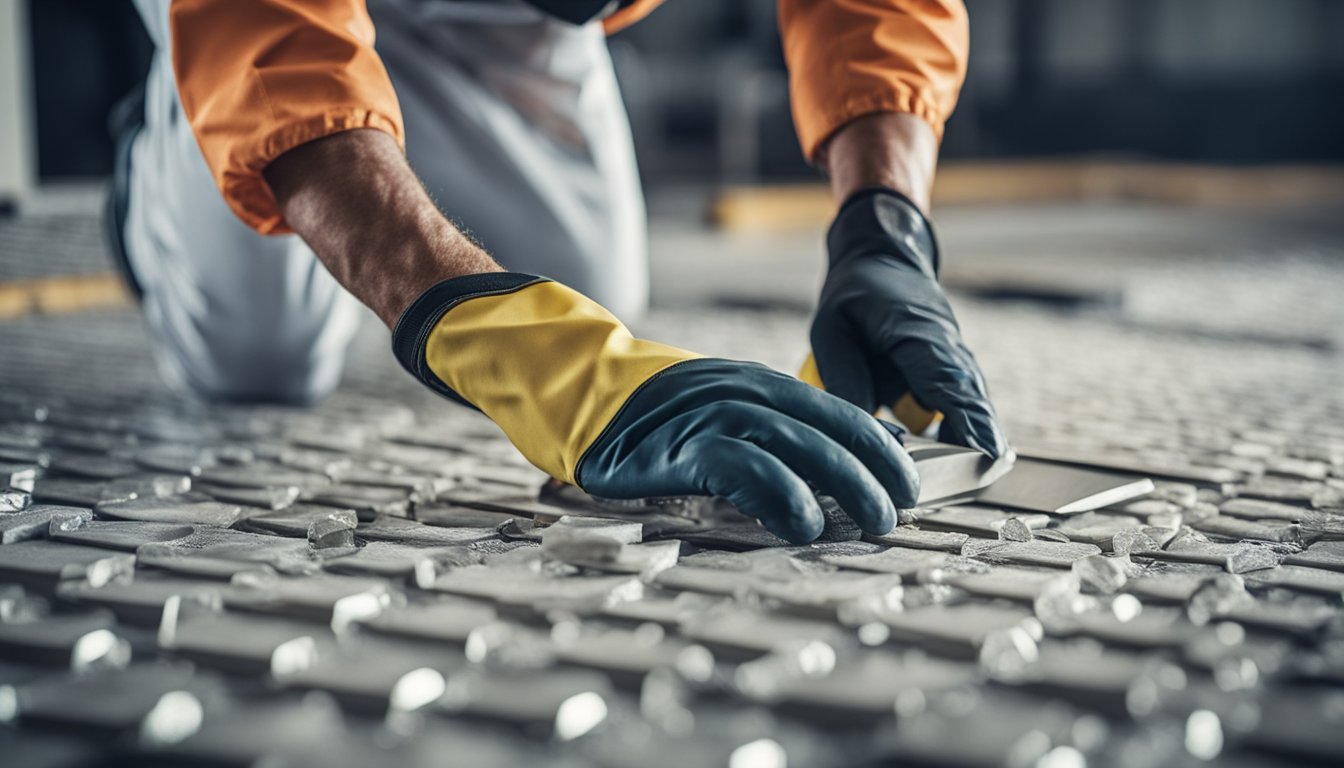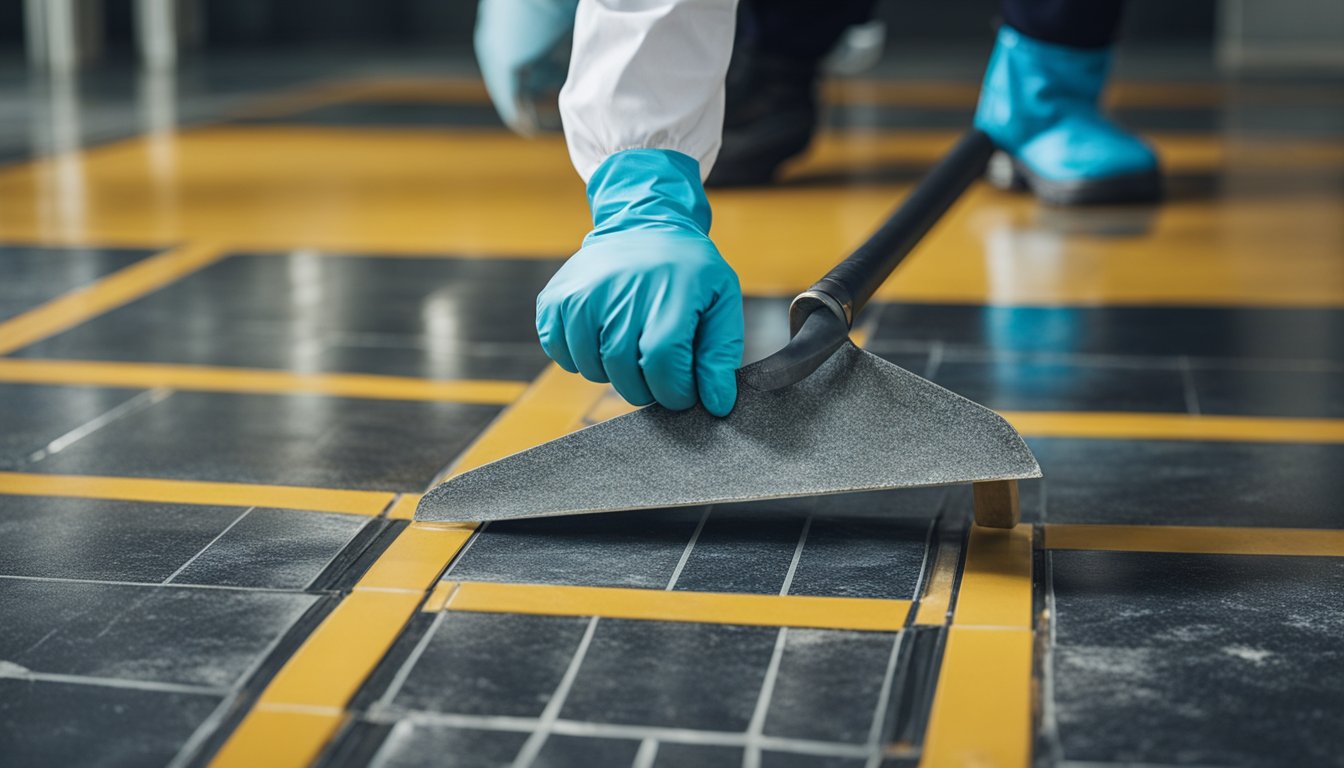Late updated: 02 Jul 2024 15:07
Written by: Daniel Harper
Safe Techniques For Removing Asbestos Tiles: Expert Guidance and Safety Tips
Removing asbestos tiles is a task that requires precision and caution. Asbestos fibres, if disturbed and inhaled, can pose serious health risks. While there are several methods to address asbestos flooring, many experts agree that covering the tiles can sometimes be a safer alternative than removing them entirely. If removal is necessary, taking the correct safety measures is paramount to avoid asbestos exposure.

Before embarking on the removal process, it’s essential to recognise the condition of the tiles. Damaged or deteriorating vinyl asbestos tiles are considered friable, meaning they can easily release hazardous fibres into the air. In contrast, well-preserved tiles are generally safer as long as they are not disturbed. Understanding when and how to safely handle these materials can protect your health and ensure compliance with safety regulations.
Equipped with the right knowledge and tools, you can undertake the removal of asbestos tiles responsibly. Adequate ventilation, the proper use of safety equipment, and meticulous cleaning are critical steps in this process. It’s vital to follow the recommended protocols strictly to minimise the risk of asbestos exposure. Our guide provides a comprehensive look into each of these essential steps to help you navigate the process safely.
Key Takeaways
- Covering asbestos tiles can sometimes be safer than removal.
- Damaged tiles pose a higher risk and require careful handling.
- Strict safety measures are essential to minimise asbestos exposure.
Understanding Asbestos and Its Risks
Asbestos is a mineral fibre that was heavily used in building materials due to its durability and heat-resistant properties. When disturbed, asbestos fibres can become airborne and pose significant health risks, which has led to strict safety regulations.
What Is Asbestos?
Asbestos is a naturally occurring mineral made up of fine, durable fibres. It's known for its resistance to heat, fire, and chemicals, making it a popular choice in various construction materials from the late 19th century to the late 20th century. Common applications included insulation, roofing, and flooring products.
There are six types of asbestos, including chrysotile and crocidolite. Chrysotile, or white asbestos, was the most commonly used type in construction. Despite its beneficial properties, the tiny fibres can be hazardous when they become airborne and are inhaled.
Health Concerns Related to Asbestos Exposure
Inhaling asbestos fibres is highly dangerous. Over time, these fibres can accumulate in the lungs, leading to severe health problems. Mesothelioma, a rare and aggressive cancer, directly results from asbestos exposure. It primarily affects the linings of the lungs and abdomen.
Besides mesothelioma, asbestos exposure can cause asbestosis, a chronic lung condition marked by scarred lung tissue, leading to significant breathing difficulties. Lung cancer is another major risk associated with prolonged exposure to asbestos fibres. The latency period for these diseases can be several decades, making early detection and preventive measures crucial.
Legal and Safety Regulations for Asbestos
Given the serious health risks, numerous safety regulations govern the use and removal of asbestos. In the UK, the Health and Safety Executive (HSE) sets stringent guidelines for handling asbestos. Asbestos-containing materials (ACMs) must be managed carefully to prevent fibre release.
The Control of Asbestos Regulations 2012 outlines specific duties for employers and building owners to identify and manage asbestos risks. Only licensed professionals trained in asbestos removal should handle ACMs. The Environmental Protection Agency (EPA) also plays a role in making sure compliance with these regulations to safeguard public health and the environment.
Strict penalties exist for non-compliance, and these rules help ensure that asbestos is dealt with safely, reducing the risks to workers and the public.
Safe Removal of Asbestos Tiles

Asbestos tile removal requires careful preparation, appropriate protective gear, and adherence to detailed procedures to ensure safety. Following these guidelines helps minimise exposure to toxic asbestos fibres.
Identifying Asbestos Tiles and Pre-Removal Steps
Identifying asbestos tiles is crucial before starting any removal process. Tiles installed between the 1960s and 1980s often contain asbestos. Typically, these tiles are in 9-inch, 12-inch, or 18-inch squares.
Professional testing by certified contractors can confirm the presence of asbestos. Before removal, ensure the workspace is sealed off to prevent dust spread. It is also recommended to inform neighbours and secure any necessary permits.
Personal Protective Equipment and Safety Measures
Proper protective gear is vital for safety during asbestos tile removal. Essential equipment includes:
- Disposable coveralls
- Gloves
- Goggles
- Boots
- Respirator with HEPA filters
Ensure the respirator fits properly to filter out harmful fibres. Avoid using power tools as they can release toxic dust. Keeping the work area moist helps minimise airborne particles.
Step-by-Step Asbestos Tile Removal Process
Begin by lightly misting the tiles with water to reduce dust. Use a putty knife at a 45-degree angle to pry up the tiles gently.
Start from one edge of the room and work methodically. Keep the removed tiles wet and place them directly into labelled asbestos disposal bags. If tiles are glued down, removing them with minimal breakage helps contain asbestos fibres.
Proper Disposal of Asbestos Materials
Disposal of asbestos materials must be done following regulated guidelines. Place all removed tiles, adhesive residues, and any contaminated tools or clothing in specialised asbestos disposal bags.
These bags should be sealed and clearly marked. Transport the waste to a licensed hazardous landfill. Inform the site in advance about the asbestos material to ensure they are prepared to handle the disposal properly. Avoid mixing asbestos waste with regular waste.
Frequently Asked Questions

In this section, we address common concerns related to the safe removal of asbestos tiles, from identification and safety measures to disposal protocols and alternatives.
What is the safest method for removing asbestos tiles from wooden surfaces?
To safely remove asbestos tiles from wooden surfaces, start at one corner using a putty knife. Gently lift the tile, ensuring it doesn't break. Wear protective clothing and equipment, including masks and gloves, to avoid inhaling fibres. Use damp methods to minimise dust.
How can I identify if my floor tiles contain asbestos before removal?
Floor tiles installed before the 1990s are likely to contain asbestos. A professional asbestos inspector can take samples and analyse them in a lab. This ensures accurate identification and safe handling procedures.
What are the legal requirements for disposing of asbestos tiles in the UK?
In the UK, asbestos waste must be double-bagged in heavy-duty polythene bags, sealed with duct tape, and labelled. It should be disposed of at a licensed asbestos disposal facility. Always check local council regulations for specifics.
Can asbestos tile adhesive be safely removed, and if so, how?
Yes, asbestos tile adhesive can be safely removed. Keep the adhesive wet to prevent dust formation. Use a scraper to remove the adhesive while wearing protective gear. Dispose of the waste according to local regulations.
What precautions should be taken if accidentally exposed to asbestos during tile removal?
If exposed, leave the area immediately and avoid further contamination. Remove contaminated clothing and take a thorough shower. Contact a healthcare provider to discuss any potential health monitoring that may be needed.
Are there any safe alternatives to removing asbestos tiles, such as covering them?
Yes, covering asbestos tiles is a safe alternative. You can use carpeting, vinyl, or another type of flooring over the tiles. This prevents the release of asbestos fibres and avoids the risks associated with removal.
